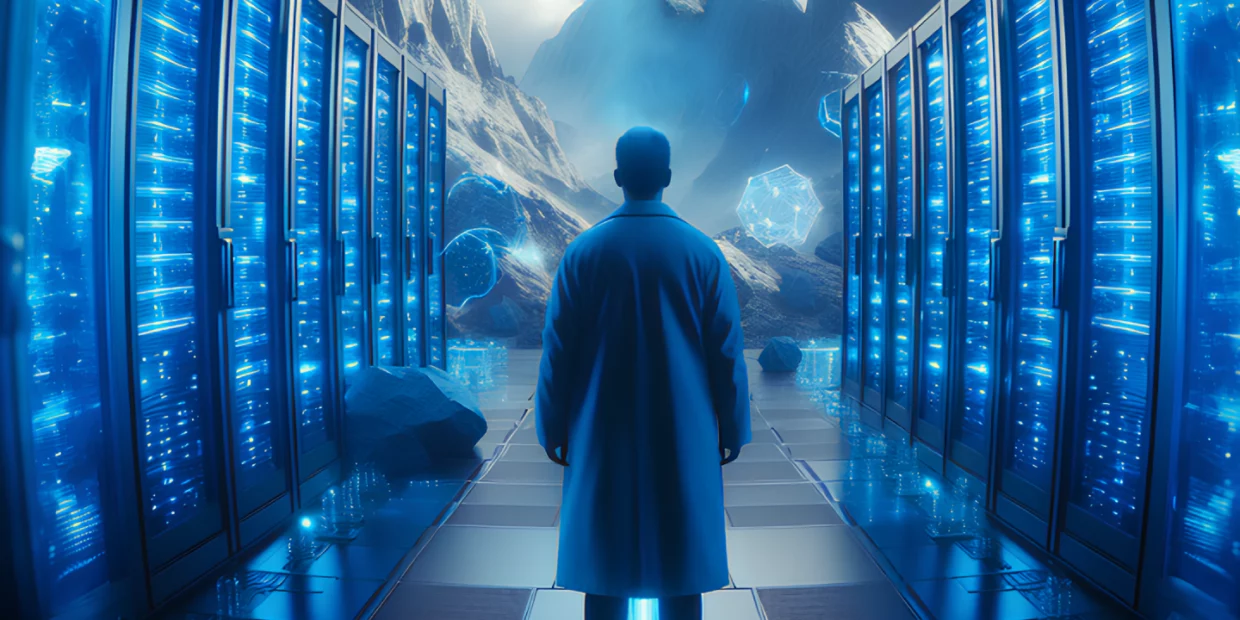Listen to this post
Introduction
In Part 1 of our exclusive blog series, Dmitry Volkov, CEO of Group-IB, talked about major developments set to influence the cybersecurity landscape in the coming years. In this edition, we continue to add future-leaning insights to empower cybersecurity professionals in elevating their cybersecurity strategies.
The first step in the process is building holistic defenses that extend beyond just risk management. To empower organizations to confront the challenges of tomorrow, Group-IB’s cybersecurity experts provide end-to-end cybersecurity capabilities and expertise. This includes effectively addressing dynamic threats, meeting cybersecurity needs, and optimizing both operational and security efficiency through best-of-breed solutions and localized threat intelligence and mitigation capabilities. Learn more about Group-IB.
As for now, let’s dive into the insights below to understand the anticipated shifts that will impact your business:
#11 Digital sovereignty and regionalized cybercrime
The world is shifting from globalization to greater digital sovereignty, with each country or region developing its unique digital space. The number of localized cybercrimes tailored to specific regions and jurisdictions will increase as a result. Local presence and expertise, in the form of Digital Resistance Centers (DCRCs) for example, will be crucial in combating these region-specific threats.
By adapting our structure and offerings to address the changes happening in the world of cybercrime, Group-IB is able to provide our customers worldwide with agile and customized cyber support — through our expanding neural network of DCRCs. Instead of being based in one centralized location, our experts are strategically stationed in DCRCs across the world, which means that we can deliver immediate, effective, and localized cybersecurity services.
#12 Rise in nation-state threat actors
In 2022, Microsoft reported a 20% increase in nation-state cyber attacks on critical infrastructure. Unfortunately, nation-state actors will only continue to become more sophisticated in their cyber operations. Threats such as firmware implants and exfiltration networks operating outside the conventional TCP/IP stack will become increasingly prevalent.
While most state-sponsored attacks target state-owned agencies, private organizations might also come under fire soon. The cybersecurity industry must find new ways of detecting and countering these ever-changing threats effectively.
#13 Putting culprits behind bars will become challenging
As cybercrime grows more rampant, malicious actors will make it even harder to trace their steps and collect admissible evidence against them.
A lack of attributable data about online criminal activities will make it more complicated to uncover the threat actors responsible and will hinder the ability of law enforcement agencies to prosecute cybercriminals. That’s why investigation experts should be involved from the get-go. Experts not only help detect cybercriminal activity and decipher their methods but also proactively intervene in stopping cybercrime.
Experts play a crucial role in supporting both businesses and law enforcement agencies by providing essential data and facilitating takedown operations.
#14 Financial fraud is likely to evolve and diversify
Over the years, financial fraud has grown to encompass credit card fraud, investment scams, money laundering activities, and more. Fraudsters are continually adapting their tactics to deceive customers or exploit vulnerabilities in infrastructure. More diverse threats mean a greater overall risk, which should compel organizations to transcend functional boundaries and work together to counter crime.
Group-IB has embraced this challenge proactively by breaking down organizational silos and integrating cybersecurity with fraud protection through a cyber-fraud fusion kill chain in our Fraud Protection platform.
In a recent report, Gartner recognized Group-IB as one of the only two vendors providing organizations with the capability to identify Tactics, Techniques, and Procedures (TTPs) used by fraudsters early in the Cyber Fraud Attack Chain.
#15 Malware will become better at evading detection
In the past, malware was relatively simple and often replicated without significant changes, which made it easier to detect and mitigate with the use of antivirus software. Damage was usually limited to the infected device or devices.
However, modern malware has undergone a significant transformation. It has become highly sophisticated as it is aimed at fulfilling ambitious malicious goals such as financial extortion. It is also being used for espionage, and such types of malware are commonly referred to as Advanced Persistent Threats (APTs).
In the future, adversaries are likely to focus on network exploitation and IoT exploitation. The use of living-off-the-land tactics, where attackers leverage legitimate system tools and activities, is also expected to increase. This evolution suggests that malware will continue to become more versatile in targeting a wide range of devices, systems, and users.
#16 The increasing need for dark web intelligence
Dark web intelligence will become increasingly relevant for defending against cyber attacks and mitigating risks associated with leaked information. Organizations will need to consistently monitor dark web marketplaces and forums to identify any data related to their brand and safeguard their reputation, protect sensitive information, and keep the trust of their customers and stakeholders.
The Group-IB Threat Intelligence platform stands out on account of having the largest repository of dark web data in the industry. The platform monitors cybercriminal forums, marketplaces, and closed communities in real-time. This proactive approach helps identify compromised credentials, stolen credit cards, fresh malware samples, and access to corporate networks. By providing critical intelligence, Group-IB helps companies identify and mitigate cyber risks before further damage can occur.
#17 Building agnostic defenses against the increasing apertures of threat
As threats become more diverse, building defenses that are not targeted against a specific type of risk means that security measures are largely ineffective. Organizations cannot anticipate every possible method that adversaries might use.
Instead of establishing defenses against known threats, the emphasis must shift to developing adaptive and resilient security controls that can protect a wide array of attack techniques.
#18 The need for embedded cybersecurity
Cybersecurity will no longer be confined to performing a centralized function. Instead, it will become an integral part of every department within a company.
Rather than being an afterthought, cybersecurity is slowly becoming ingrained in every business function and will continue to become more and more so. In the context of distributed teams, security considerations will need to be woven into business initiatives from the start.
This is particularly crucial for SaaS companies that manage vast amounts of user data, which makes them highly susceptible to falling victim to cyberattacks. The security team must be placed within the core engineering or software architectural team. This will ensure that decisions about how data is stored, accessed, and retained are made in close collaboration within the teams, which in turn enhances the company’s overall security posture.
#19 The past continues to play in the future — Ransomware
Ransomware, a leading cybersecurity threat across most industries, keeps evolving and causing ever-greater disruption. The origins of ransomware can be traced back to the earliest forms of ransom-requesting malware. Currently, the increase in initial access brokers (as outlined in Group-IB’s Hi-Tech Crime Trends report) and the rise of Ransomware-as-a-Service programs (RaaS) are the two main driving forces behind the ongoing growth of ransomware operations.
Whether orchestrated by independent threat actors or nation-states, ransomware remains a persistent threat that is difficult to overcome. Its future trajectory is likely to involve a shift in attack tactics towards targeting newer and less common endpoints such as cloud services and IoT. Adversaries are also likely to leverage automation to scale their operations. Businesses and entities in charge of legislation should therefore fortify their defenses, enhance recovery preparations, and proactively respond to compromise.
Law enforcement agencies should harness the intelligence and expertise of cybersecurity providers to persecute ransomware gangs and unveil their Tactics, Techniques, and Procedures (TTPs) as a way of strengthening global security. Group-IB has been an active partner to global law enforcement agencies and has assisted in their operations. Learn how we help businesses protect their mission-critical data and assets against ransomware.
#20 Quantum-safe algorithms will secure our communications
Experts anticipate that quantum computers or supercomputers will pose a significant threat to existing cryptographic protection measures. This technology has the potential to compromise the confidentiality of information that is currently protected using cryptographic methods. Although quantum computing is not yet mainstream, it is expected to become prevalent as early as 2030.
The cryptographic tools commonly used today rely on complex mathematical problems that are difficult for traditional computers to solve but could easily be addressed by quantum computers. This threatens the security of online information. Today’s commonly used cryptographic tools depend on intricate mathematical problems that prove challenging for traditional computers to solve but could be easily addressed by quantum computers.
In response to this, quantum-safe algorithms are being developed to secure sensitive data, access, and communications in the wake of emerging quantum computing.
Concluding thoughts
With all these technology changes approaching fast, organizations should consider upgrading their cybersecurity infrastructure and remain as risk-averse as possible. Yet implementing such a decision is likely to involve a complex process influenced by factors such as the current technological setup, budget limitations, and staffing needs.
Throwing money at a problem may seem like a quick fix, but it’s not always the most effective solution. The expanding threat surface demands a more holistic approach to cybersecurity. It’s essential to reframe expectations around risk management and move away from the unrealistic notion that a CISO or IT administrator alone can handle any and every breach. Regardless of the scale of operations, organizations working in a regulated environment will find it highly challenging to ensure comprehensive cybersecurity in-house. A more pragmatic approach to building a comprehensive cybersecurity strategy goes beyond internal resources. Working with external teams specialized in monitoring and defending network infrastructure can provide much-valued and much-needed support.
Learn how working with us can help your organization tap into next-gen defense capabilities and create a more informed and effective posture against current and future cyber threats.






























